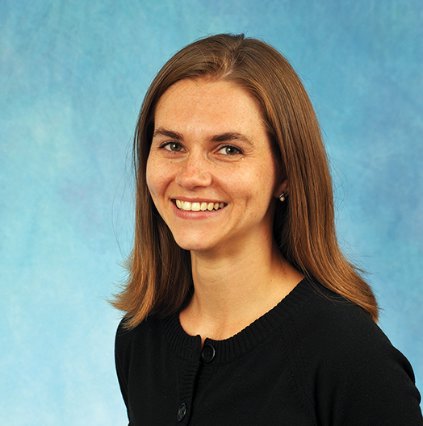User login
Men and women older than 65 years make up the fastest-growing portion of the U.S. population. By 2020, more than 16% of the American population is projected to be older than 65 years of age, according to projections by the U.S. Census.
As the population ages, an increasing proportion of our patients will be considered elderly (greater than 65 years), and up to 50% of surgeries will be performed in these patients. Perioperative mortality has decreased over the past 50 years in all patients, but elderly patients continue to have higher perioperative morbidity and mortality than their younger counterparts (Mt. Sinai J. Med. 2012;79:95-106). This increased morbidity is particularly relevant to gynecologists as 60% of the population older than 65 years is female. It is also important to note that 30-day mortality is higher in patients older than 80 years.
Significant risk factors in any surgical population include underlying cardiac and pulmonary disease, smoking, obesity, prior or current abdominal/thoracic surgery, and type of anesthesia (Prim. Care 1989;16:361-76).
Studies conflict on whether age alone is an independent risk factor for perioperative morbidity and mortality. Older patients tend to have more underlying diseases, thus placing them at increased risk for perioperative morbidity. Unfortunately, the presence of coexisting comorbidities does not alone account for poor outcomes. In one large population-based study, even healthy elderly patients continued to have higher morbidity and mortality. This is likely because elderly patients respond differently to perioperative physiologic stressors and pharmacologic interventions (Anesthesiology 2009;110:1176-81).
Organ function declines with age, but there is wide inter- and intraindividual variability in the rate of decline (Anesthesiology 2009;110:1176-81). Because of the potential for interpatient aging differences, gynecologists must assess each patient; chronologic age and biologic age can differ significantly (Semin. Perioper. Nurs. 1997;6:14-20). There are changes in pharmacokinetics and pharmacodynamics related to age and organ function changes. Alterations in kidney and liver function result in slower rates of drug metabolism, potentially increasing concentrations of medications in older patients. In addition to considering alterations in dosing, physicians must consider the possibility of increased or decreased sensitivities to medications resulting from alterations in pharmacodynamics.
Patients over 80 years old have increased perioperative morbidity and mortality. Respiratory and urinary tract complications are the most common, but cardiac complications are more severe in these patients (Mt. Sinai J. Med. 2012;79:95-106). Respiratory complications account for 40% of surgical complications and up to 20% of all surgery-related deaths. Respiratory morbidity is increased in patients who are under anesthesia for more than 3 hours or have abdominal and/or thoracic incisions (Can. Oper. Room Nurs. J. 2007;25:34-5, 37-41). Although less prevalent, cardiovascular complications can be devastating short term, accounting for 50% of postoperative mortality in the elderly. Complications increase with age, and 20% of patients older than 80 years experience at least one complication, which is particularly concerning given that the presence of one complication increases mortality sixfold.
In addition to being at greater risk for physical complications, elderly patients are at increased risk of experiencing psychological and neurologic complications in the postoperative period. Up to 15% of elderly patients can develop postoperative delirium, which is associated with longer hospital stays and other long-term consequences (Prim. Care 1989;16:361-76). Postoperative cognitive decline is a research finding of deterioration in neurocognitive testing that is also seen in elderly patients. Practically, this decline is manifested by a decreased ability to perform activities of daily living and instrumental activities of daily living. This decline may resolve over the first year postoperatively, and the incidence ranges from 5% to 15%. Patients older than 70 years are more likely to experience postoperative delirium and cognitive decline (Curr. Opin. Anaesthesiol. 2010;23:201-8).
As the population ages, gynecologists are going to face an increase in the number of women requiring surgical intervention for both benign and malignant indications. A thorough knowledge of the risks associated with this population is of the utmost importance so that we can appropriately counsel our patients and their families and take steps to minimize complications.
Dr. Hacker is a rising fourth-year resident in the department obstetrics and gynecology at the University of North Carolina at Chapel Hill. Dr. Gehrig is professor and director of gynecologic oncology at the university. Dr. Hacker and Dr. Gehrig said they had no relevant financial disclosures.
Men and women older than 65 years make up the fastest-growing portion of the U.S. population. By 2020, more than 16% of the American population is projected to be older than 65 years of age, according to projections by the U.S. Census.
As the population ages, an increasing proportion of our patients will be considered elderly (greater than 65 years), and up to 50% of surgeries will be performed in these patients. Perioperative mortality has decreased over the past 50 years in all patients, but elderly patients continue to have higher perioperative morbidity and mortality than their younger counterparts (Mt. Sinai J. Med. 2012;79:95-106). This increased morbidity is particularly relevant to gynecologists as 60% of the population older than 65 years is female. It is also important to note that 30-day mortality is higher in patients older than 80 years.
Significant risk factors in any surgical population include underlying cardiac and pulmonary disease, smoking, obesity, prior or current abdominal/thoracic surgery, and type of anesthesia (Prim. Care 1989;16:361-76).
Studies conflict on whether age alone is an independent risk factor for perioperative morbidity and mortality. Older patients tend to have more underlying diseases, thus placing them at increased risk for perioperative morbidity. Unfortunately, the presence of coexisting comorbidities does not alone account for poor outcomes. In one large population-based study, even healthy elderly patients continued to have higher morbidity and mortality. This is likely because elderly patients respond differently to perioperative physiologic stressors and pharmacologic interventions (Anesthesiology 2009;110:1176-81).
Organ function declines with age, but there is wide inter- and intraindividual variability in the rate of decline (Anesthesiology 2009;110:1176-81). Because of the potential for interpatient aging differences, gynecologists must assess each patient; chronologic age and biologic age can differ significantly (Semin. Perioper. Nurs. 1997;6:14-20). There are changes in pharmacokinetics and pharmacodynamics related to age and organ function changes. Alterations in kidney and liver function result in slower rates of drug metabolism, potentially increasing concentrations of medications in older patients. In addition to considering alterations in dosing, physicians must consider the possibility of increased or decreased sensitivities to medications resulting from alterations in pharmacodynamics.
Patients over 80 years old have increased perioperative morbidity and mortality. Respiratory and urinary tract complications are the most common, but cardiac complications are more severe in these patients (Mt. Sinai J. Med. 2012;79:95-106). Respiratory complications account for 40% of surgical complications and up to 20% of all surgery-related deaths. Respiratory morbidity is increased in patients who are under anesthesia for more than 3 hours or have abdominal and/or thoracic incisions (Can. Oper. Room Nurs. J. 2007;25:34-5, 37-41). Although less prevalent, cardiovascular complications can be devastating short term, accounting for 50% of postoperative mortality in the elderly. Complications increase with age, and 20% of patients older than 80 years experience at least one complication, which is particularly concerning given that the presence of one complication increases mortality sixfold.
In addition to being at greater risk for physical complications, elderly patients are at increased risk of experiencing psychological and neurologic complications in the postoperative period. Up to 15% of elderly patients can develop postoperative delirium, which is associated with longer hospital stays and other long-term consequences (Prim. Care 1989;16:361-76). Postoperative cognitive decline is a research finding of deterioration in neurocognitive testing that is also seen in elderly patients. Practically, this decline is manifested by a decreased ability to perform activities of daily living and instrumental activities of daily living. This decline may resolve over the first year postoperatively, and the incidence ranges from 5% to 15%. Patients older than 70 years are more likely to experience postoperative delirium and cognitive decline (Curr. Opin. Anaesthesiol. 2010;23:201-8).
As the population ages, gynecologists are going to face an increase in the number of women requiring surgical intervention for both benign and malignant indications. A thorough knowledge of the risks associated with this population is of the utmost importance so that we can appropriately counsel our patients and their families and take steps to minimize complications.
Dr. Hacker is a rising fourth-year resident in the department obstetrics and gynecology at the University of North Carolina at Chapel Hill. Dr. Gehrig is professor and director of gynecologic oncology at the university. Dr. Hacker and Dr. Gehrig said they had no relevant financial disclosures.
Men and women older than 65 years make up the fastest-growing portion of the U.S. population. By 2020, more than 16% of the American population is projected to be older than 65 years of age, according to projections by the U.S. Census.
As the population ages, an increasing proportion of our patients will be considered elderly (greater than 65 years), and up to 50% of surgeries will be performed in these patients. Perioperative mortality has decreased over the past 50 years in all patients, but elderly patients continue to have higher perioperative morbidity and mortality than their younger counterparts (Mt. Sinai J. Med. 2012;79:95-106). This increased morbidity is particularly relevant to gynecologists as 60% of the population older than 65 years is female. It is also important to note that 30-day mortality is higher in patients older than 80 years.
Significant risk factors in any surgical population include underlying cardiac and pulmonary disease, smoking, obesity, prior or current abdominal/thoracic surgery, and type of anesthesia (Prim. Care 1989;16:361-76).
Studies conflict on whether age alone is an independent risk factor for perioperative morbidity and mortality. Older patients tend to have more underlying diseases, thus placing them at increased risk for perioperative morbidity. Unfortunately, the presence of coexisting comorbidities does not alone account for poor outcomes. In one large population-based study, even healthy elderly patients continued to have higher morbidity and mortality. This is likely because elderly patients respond differently to perioperative physiologic stressors and pharmacologic interventions (Anesthesiology 2009;110:1176-81).
Organ function declines with age, but there is wide inter- and intraindividual variability in the rate of decline (Anesthesiology 2009;110:1176-81). Because of the potential for interpatient aging differences, gynecologists must assess each patient; chronologic age and biologic age can differ significantly (Semin. Perioper. Nurs. 1997;6:14-20). There are changes in pharmacokinetics and pharmacodynamics related to age and organ function changes. Alterations in kidney and liver function result in slower rates of drug metabolism, potentially increasing concentrations of medications in older patients. In addition to considering alterations in dosing, physicians must consider the possibility of increased or decreased sensitivities to medications resulting from alterations in pharmacodynamics.
Patients over 80 years old have increased perioperative morbidity and mortality. Respiratory and urinary tract complications are the most common, but cardiac complications are more severe in these patients (Mt. Sinai J. Med. 2012;79:95-106). Respiratory complications account for 40% of surgical complications and up to 20% of all surgery-related deaths. Respiratory morbidity is increased in patients who are under anesthesia for more than 3 hours or have abdominal and/or thoracic incisions (Can. Oper. Room Nurs. J. 2007;25:34-5, 37-41). Although less prevalent, cardiovascular complications can be devastating short term, accounting for 50% of postoperative mortality in the elderly. Complications increase with age, and 20% of patients older than 80 years experience at least one complication, which is particularly concerning given that the presence of one complication increases mortality sixfold.
In addition to being at greater risk for physical complications, elderly patients are at increased risk of experiencing psychological and neurologic complications in the postoperative period. Up to 15% of elderly patients can develop postoperative delirium, which is associated with longer hospital stays and other long-term consequences (Prim. Care 1989;16:361-76). Postoperative cognitive decline is a research finding of deterioration in neurocognitive testing that is also seen in elderly patients. Practically, this decline is manifested by a decreased ability to perform activities of daily living and instrumental activities of daily living. This decline may resolve over the first year postoperatively, and the incidence ranges from 5% to 15%. Patients older than 70 years are more likely to experience postoperative delirium and cognitive decline (Curr. Opin. Anaesthesiol. 2010;23:201-8).
As the population ages, gynecologists are going to face an increase in the number of women requiring surgical intervention for both benign and malignant indications. A thorough knowledge of the risks associated with this population is of the utmost importance so that we can appropriately counsel our patients and their families and take steps to minimize complications.
Dr. Hacker is a rising fourth-year resident in the department obstetrics and gynecology at the University of North Carolina at Chapel Hill. Dr. Gehrig is professor and director of gynecologic oncology at the university. Dr. Hacker and Dr. Gehrig said they had no relevant financial disclosures.


